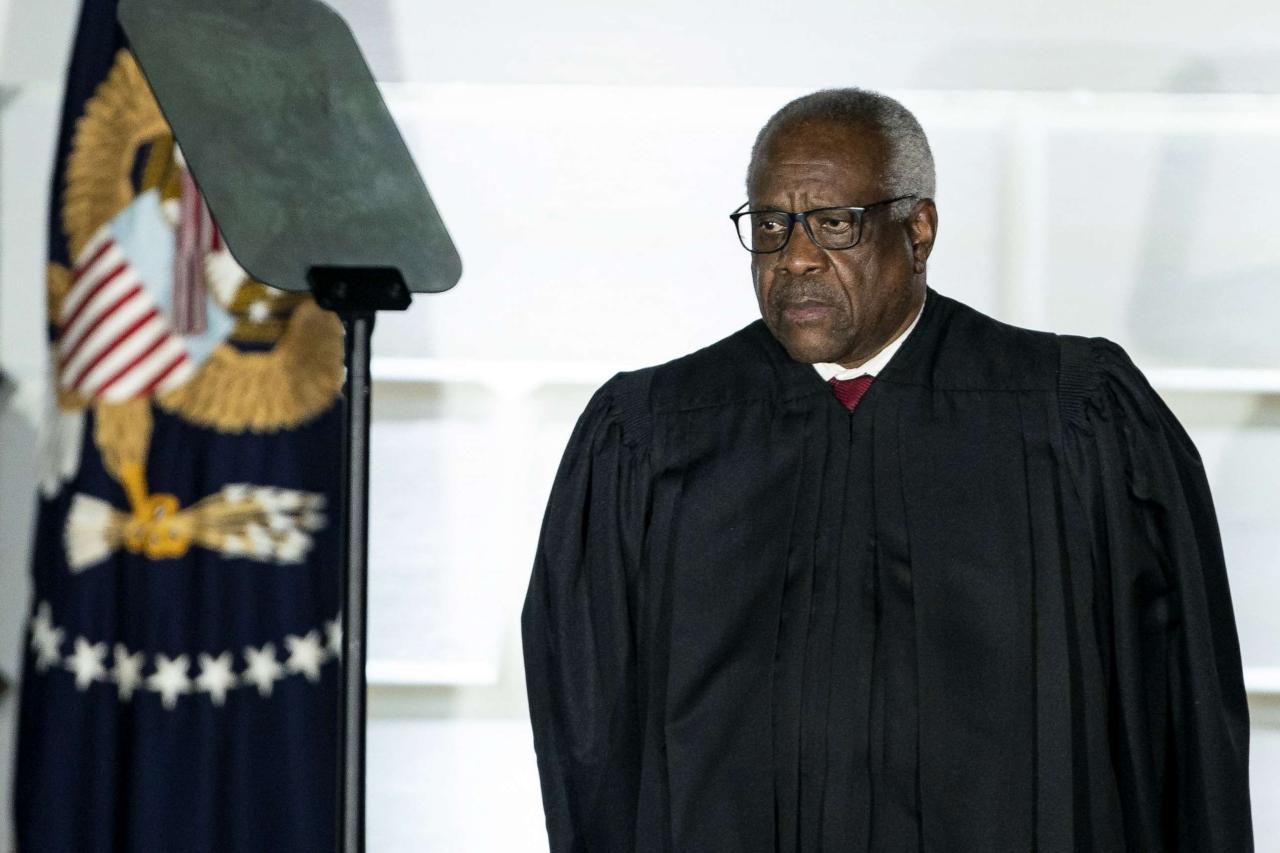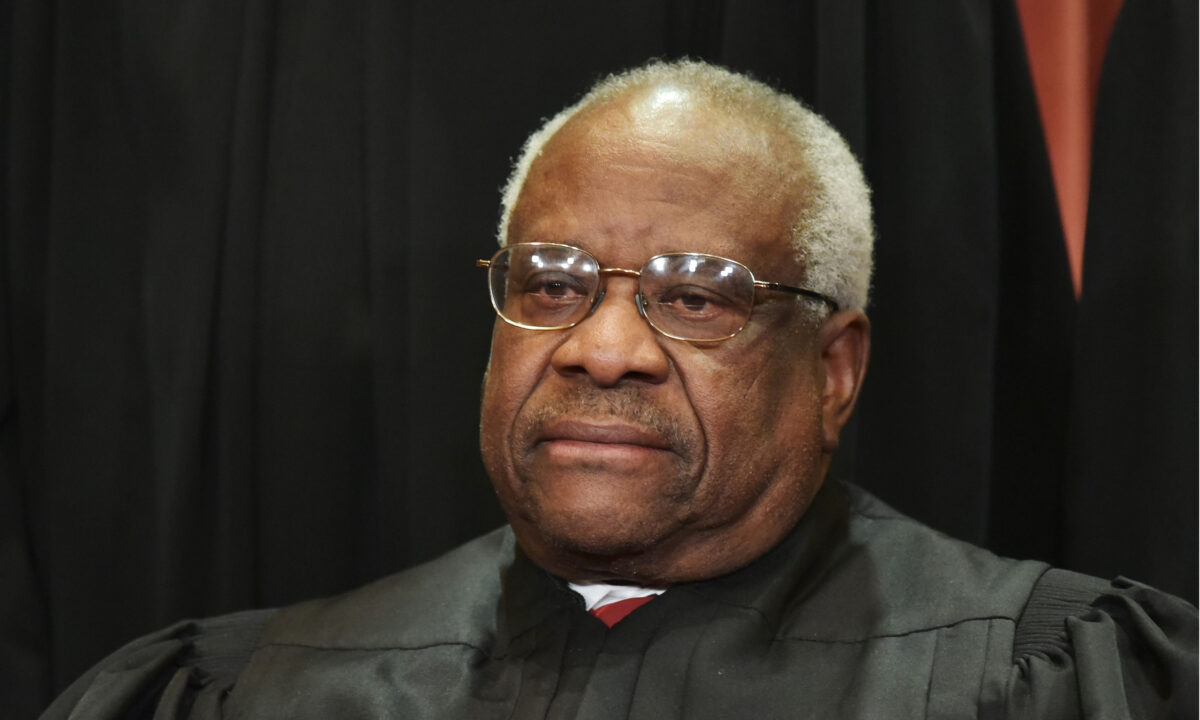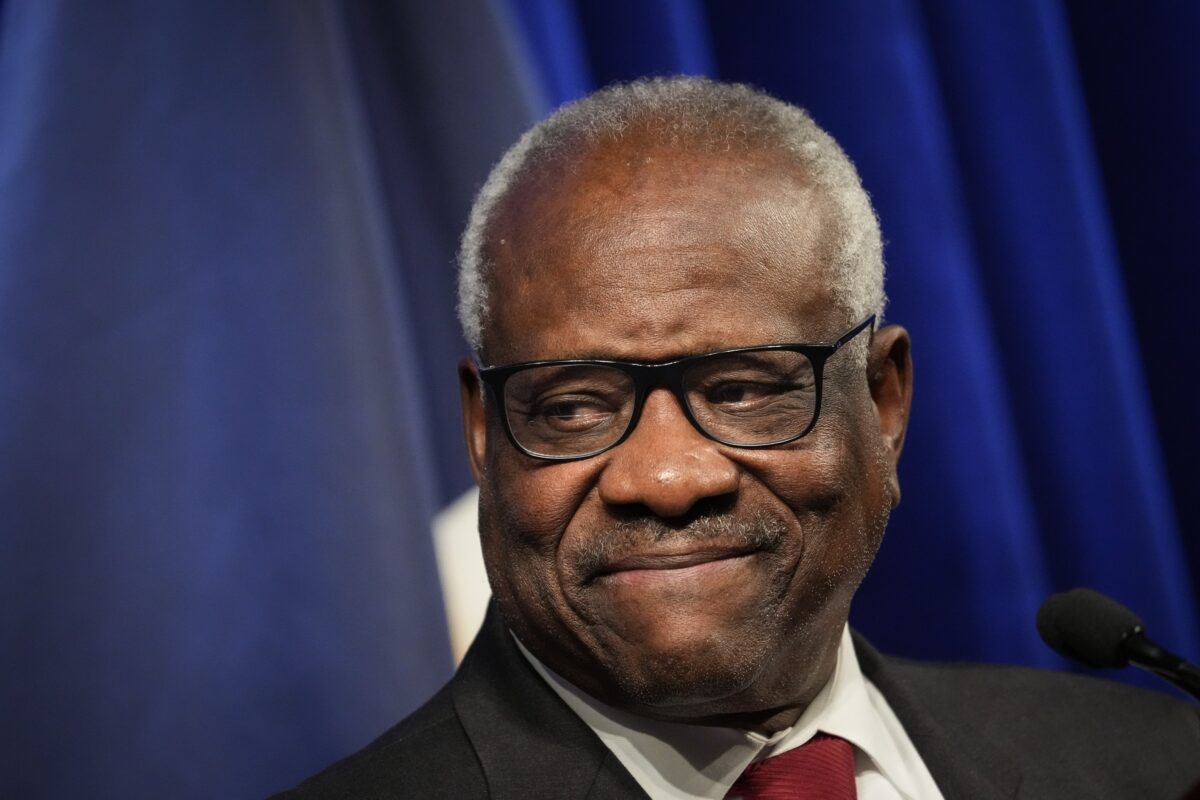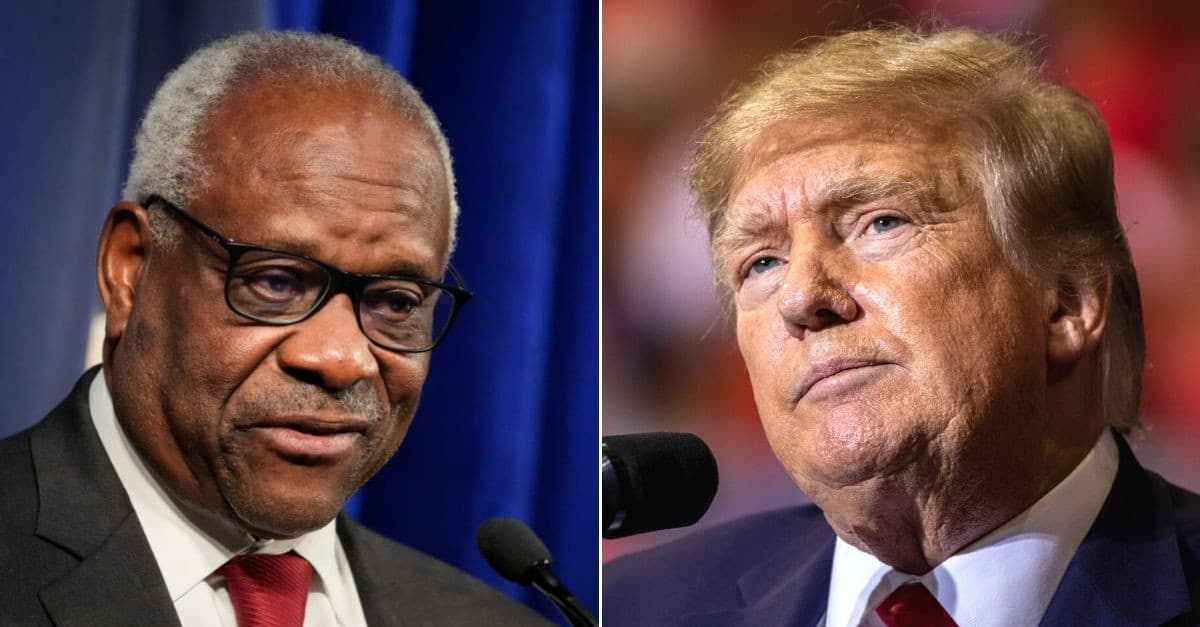Federal courts won’t refer Clarence Thomas for DOJ investigation, a decision that has ignited a firestorm of debate. This refusal to investigate allegations against the Supreme Court Justice highlights the complex interplay between judicial ethics, executive power, and public perception. The ruling raises crucial questions about accountability within the highest court in the land and the potential limitations on oversight of its members.
The controversy surrounding Justice Thomas centers on alleged ethical breaches, specifically concerning undisclosed gifts and financial ties. While the courts have declined to refer the matter for a Department of Justice investigation, the public discourse continues, fueled by concerns about transparency and the integrity of the Supreme Court. This decision underscores the ongoing tension between protecting the independence of the judiciary and ensuring public confidence in its impartiality.
The Judicial Branch’s Handling of Ethical Complaints
The process for handling ethical complaints against Supreme Court justices is a complex and often opaque one, lacking the clearly defined procedures found in other branches of government. Historically, reliance has been placed on internal mechanisms and the justices’ own sense of propriety. This contrasts sharply with the more formalized processes in place for executive and legislative branch officials.
Ethical Complaint Procedures for Supreme Court Justices
Traditionally, ethical complaints against Supreme Court justices have been addressed through informal channels, primarily relying on the Chief Justice to oversee internal review and potential disciplinary action. There’s no external oversight body with formal investigative powers. The process lacks transparency, with limited public disclosure of complaints or investigations. This system contrasts with the more structured processes within the executive and legislative branches, which involve independent ethics committees and external investigative bodies.
Historical Precedent for Handling Ethical Complaints
Historically, the Supreme Court has maintained a strong emphasis on self-regulation. While instances of ethical scrutiny have occurred throughout the Court’s history, formal investigations have been rare. Past controversies, often handled discreetly, have involved allegations of conflicts of interest, financial improprieties, or perceived biases. The lack of a clear, established process has led to inconsistencies in how such complaints are addressed, contributing to criticism of a lack of accountability.
Comparison with Other Branches of Government
The handling of ethical complaints differs significantly across the three branches of government. The executive branch, for example, has the Office of Government Ethics (OGE) to oversee ethical conduct, while the legislative branch has its own ethics committees. These bodies have clear procedures for investigating complaints, conducting hearings, and imposing sanctions. The lack of a similar independent body for the Supreme Court has fueled calls for reform.
So, the Federal courts decided against referring Clarence Thomas for a DOJ investigation – a pretty big deal, right? It makes you think about the scale of things; consider how much manufacturing power China holds, as highlighted in this interesting Hacker News article: China is the manufacturing superpower | Hacker News. The contrast between these two vastly different stories shows how global events are interconnected, ultimately impacting even the seemingly separate world of US judicial processes.
Key Steps in Investigating Ethical Complaints Against Federal Judges
| Step | Description | Responsible Party | Timeline |
|---|---|---|---|
| Complaint Filed | An individual or group files a formal or informal complaint. | Various (e.g., Judicial Conference, individual judges) | Varies |
| Preliminary Review | The complaint is assessed for merit and potential violations of the Code of Conduct. | Judicial Conference or relevant committee | Weeks to months |
| Investigation (if warranted) | A formal investigation may be launched, including interviews and document review. | Judicial Conference or appointed investigators | Months to years |
| Resolution | The investigation concludes with findings and potential recommendations for disciplinary action. | Judicial Conference or relevant committee | Varies |
The Department of Justice’s Investigative Authority
The Department of Justice’s (DOJ) authority to investigate potential ethical violations by Supreme Court justices is a complex legal and political issue. While the DOJ has broad investigative powers, its ability to investigate justices is limited by concerns of separation of powers and the Court’s independence.
DOJ’s Authority and Legal Limitations
The DOJ could potentially investigate a Supreme Court justice if credible evidence emerges of a crime or other serious misconduct. However, initiating such an investigation would be a highly sensitive and politically charged decision. Concerns about potential interference with the Court’s independence and the potential for partisan accusations would heavily influence any such decision. The DOJ would need to carefully weigh the evidence and the potential ramifications before acting.
Implications of a DOJ Investigation into Justice Thomas’s Conduct
A DOJ investigation into Justice Thomas’s conduct could have significant implications. It could erode public trust in the Supreme Court, potentially leading to calls for impeachment or other forms of accountability. The investigation itself, regardless of its outcome, could be highly disruptive to the Court’s operations and its ability to function effectively. The political fallout would likely be substantial.
Factors Influencing DOJ’s Decision to Investigate, Federal courts won’t refer Clarence Thomas for DOJ investigation
Several factors would influence the DOJ’s decision, including the strength and credibility of evidence, the potential for a successful prosecution, and the political climate. The DOJ would also need to consider the potential impact on the Supreme Court’s legitimacy and the broader public interest. The risk of appearing to be politically motivated would be a major consideration.
Public Perception and the Role of the Media: Federal Courts Won’t Refer Clarence Thomas For DOJ Investigation
Media coverage plays a crucial role in shaping public opinion on ethical controversies involving Supreme Court justices. Past controversies demonstrate how media narratives can significantly impact public trust and perceptions of the Court’s legitimacy. The current situation is no exception, with various media outlets offering diverse perspectives and interpretations.
Media Coverage and Public Opinion
Examples of media’s influence include the coverage of Justice Abe Fortas’s resignation in 1969, which followed allegations of conflicts of interest. Similarly, the media played a significant role in shaping public perceptions during other instances of ethical scrutiny. The tone, framing, and sources used in media reports can significantly influence public opinion and the level of public outrage.
Impact on Public Trust in the Supreme Court
The current controversy surrounding Justice Thomas has the potential to significantly damage public trust in the Supreme Court. This erosion of trust could lead to increased polarization, further questioning of the Court’s impartiality, and a diminished sense of legitimacy in its rulings. The long-term consequences could be substantial.
Hypothetical Media Campaign Scenarios
One scenario could involve a focus on factual reporting, presenting all sides of the issue and avoiding sensationalism. Another could emphasize the potential impact on the Court’s legitimacy and the need for reform. A third might adopt a more critical approach, highlighting potential conflicts of interest and questioning the adequacy of current ethical standards. Each approach would likely yield a different public response.
Timeline of Key Events and Media Coverage
A timeline would include the initial reports of Justice Thomas’s alleged ethical breaches, the subsequent media coverage and public reaction, the responses from the Judicial Conference and other relevant bodies, and any legal actions taken. This timeline would offer a chronological overview of the evolving situation and its media representation.
Ethical Considerations and Standards of Conduct
Supreme Court justices are expected to uphold high ethical standards, although the specific rules and enforcement mechanisms are less defined than in other branches. These standards aim to ensure impartiality, avoid conflicts of interest, and maintain public trust in the Court’s integrity. Comparison with ethical standards for other federal judges reveals both similarities and differences.
Ethical Standards for Supreme Court Justices

Examples of applicable ethical standards include the Code of Conduct for United States Judges, which while not legally binding on Supreme Court justices, serves as a guide. These standards address issues such as impartiality, financial disclosure, outside income, and the acceptance of gifts. However, the lack of an independent enforcement body leaves room for interpretation and potential inconsistencies in application.
So, the Federal courts decided against referring Justice Thomas to the DOJ for investigation. It’s a big deal, and you can imagine the different perspectives being voiced – maybe even using an ai voice generator to create various interpretations of the news for different audiences. Ultimately, the decision leaves the matter unresolved, raising further questions about accountability within the highest court.
Comparison with Ethical Standards for Other Federal Judges

While the Code of Conduct applies to all federal judges, the enforcement mechanisms differ. Other federal judges are subject to disciplinary processes overseen by the Judicial Conference of the United States. The lack of a comparable system for Supreme Court justices highlights a significant gap in accountability.
Different Ethical Frameworks and the Thomas Case

Different ethical frameworks, such as deontology (duty-based ethics) and consequentialism (outcome-based ethics), could be applied to analyze Justice Thomas’s conduct. A deontological approach might focus on whether his actions violated specific rules or duties, while a consequentialist approach might consider the potential impact of his actions on public trust and the Court’s legitimacy. Both perspectives would offer valuable insights.
Consequences of Unaddressed Ethical Violations
Failure to address potential ethical violations by Supreme Court justices could severely undermine the Court’s legitimacy and erode public trust. This could lead to decreased respect for judicial decisions, increased political polarization, and calls for broader institutional reforms. The long-term impact on the judicial system could be profound.
Impact on the Supreme Court’s Decision-Making Process

The ongoing controversy surrounding Justice Thomas has the potential to influence the Supreme Court’s decision-making process in future cases. Potential conflicts of interest and the erosion of public trust could affect the Court’s ability to maintain its impartiality and legitimacy. Mechanisms to ensure impartiality are crucial to mitigate these risks.
Influence on Future Case Decisions
The controversy could lead to increased scrutiny of the Court’s decisions, particularly those involving cases where Justice Thomas’s potential conflicts of interest are perceived as relevant. Public perception of bias could influence the acceptance and legitimacy of future rulings, even if no direct evidence of bias exists.
Potential Conflicts of Interest Scenarios
Hypothetical scenarios could involve cases with connections to organizations or individuals who have financially supported Justice Thomas or his wife. The perception of bias, even without proof, could cast doubt on the impartiality of the Court’s decisions in such cases, potentially leading to challenges and undermining public confidence.
Mechanisms for Ensuring Impartiality
Possible mechanisms to maintain impartiality include greater transparency in financial disclosures, stricter recusal standards, and the establishment of an independent ethics body to investigate complaints. These measures could help restore public trust and strengthen the Court’s position as an impartial arbiter of justice.
Hypothetical Scenario Impacting a Future Case
Imagine a future case involving a major corporation with ties to Ginni Thomas’s political activities. The perception of a conflict of interest could lead to public outcry, calls for Justice Thomas’s recusal, and questions about the legitimacy of any decision he participates in. This scenario illustrates the potential for the controversy to directly impact the Court’s work.
So, the whole Clarence Thomas DOJ investigation thing? Federal courts decided against it. It got me thinking about how different voices can impact a narrative, which led me to check out some AI options for generating speech; you should totally check out this helpful guide on comparing different AI voice generator software options if you’re interested.
Anyway, back to Thomas – the lack of an investigation definitely raises some eyebrows.
Potential for Future Reforms
Several reforms could improve the system for handling ethical complaints against Supreme Court justices. These reforms aim to enhance transparency, accountability, and public trust in the Court’s integrity. The feasibility and potential implications of these reforms warrant careful consideration.
Proposed Reforms to the Ethical Complaint System
- Establish an independent ethics body: This body would be responsible for investigating complaints, conducting hearings, and recommending disciplinary actions. Pros: Increased independence and impartiality; Cons: Potential for political influence; concerns about judicial independence.
- Strengthen financial disclosure requirements: More comprehensive and transparent disclosure of financial assets and liabilities could help prevent conflicts of interest. Pros: Greater transparency; Cons: Potential invasion of privacy; burden on justices.
- Implement stricter recusal standards: Clearer guidelines for recusal in cases involving potential conflicts of interest would enhance impartiality. Pros: Reduced perception of bias; Cons: Potential for increased workload on remaining justices.
- Enhance public access to information: Greater transparency in the handling of ethical complaints would increase public trust and accountability. Pros: Increased public confidence; Cons: Potential for misuse of information; impact on judicial deliberations.
Last Point
The decision not to refer Justice Thomas for a DOJ investigation leaves many questions unanswered and the debate far from settled. While the courts have opted against external investigation, the ethical concerns raised remain a significant challenge to the Supreme Court’s credibility and public trust. The long-term impact of this decision on the Court’s legitimacy and future decision-making processes will undoubtedly be a topic of continued discussion and scrutiny.
The need for clear, enforceable ethical standards for Supreme Court justices remains a pressing issue demanding attention.
Answers to Common Questions
What are the specific allegations against Justice Thomas?
Allegations involve undisclosed gifts and financial ties, raising concerns about potential conflicts of interest.
Why did the federal courts refuse to refer the case to the DOJ?
The reasoning behind the decision is complex and likely involves interpretations of legal precedent and the separation of powers.
What are the potential consequences of this decision?
Potential consequences include decreased public trust in the Supreme Court, increased calls for ethical reform, and continued political debate.
What are the existing mechanisms for addressing ethical complaints against Supreme Court justices?
Current mechanisms are limited and often rely on internal processes within the judicial branch, lacking external oversight.
What are some proposed reforms to improve ethical oversight of the Supreme Court?
Proposed reforms include creating an independent ethics body to investigate complaints and establishing clearer, more stringent ethical guidelines for justices.
